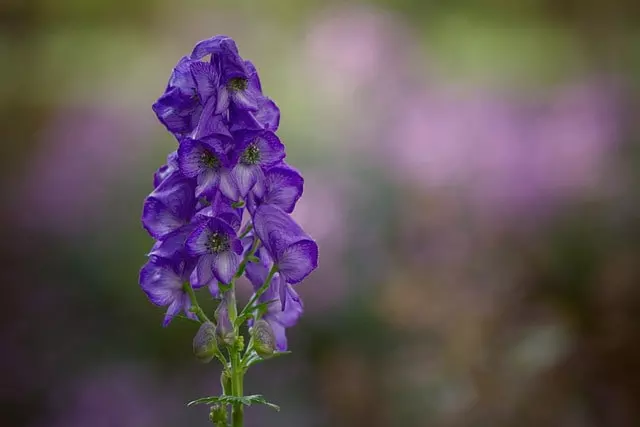Aconite is a plant native to the Eurasian mountains. In some countries, it is planted as an ornamental plant because of its luxuriant flowering and beauty. Learn all about how to grow aconite in this article.
However, its cultivation or any kind of home use is generally discouraged It is a very poisonous plant, the most poisonous plant in Europe.
It contains aconitine, an alkaloid that can slow the heart and 1 milligram is enough to kill an adult of 176 lb (80 kilograms) due to its strong cardiotoxic and neurotoxic effect.
Table of Contents
What Are the Characteristics of Aconite?
Aconite is a perennial herbaceous plant, with a simple annual stem, which can measure 5 ft (1.5 meters) in height. It has a turnip-shaped root, which dies at the end of fruiting. However, the plant survived due to adventitious roots sprouting from the stem.
Aconite leaves are alternate, palm-shaped, divided into long strips of irregular shape, called laciniae. They are bright green, rigid and flexible, with a leathery appearance.
On the other hand, its flowers are zygomorphic, composed of 5 different pieces of deep blue or dark violet color. They bloom from July to October and reach 1.2″ to 1.6″ (3 to 4 centimeters) in diameter and 0.8″ (2 centimeters) high.
They are grouped in clusters at the top of the stem. The fruit of the aconite measures approximately 0.66″ (17 millimeters) and is made up of 3 to 5 arched follicles. Each follicle contains numerous black, pyramidal, and shiny seeds of small size, between 0.11″ and 0.2″ (3 and 5 millimeters).
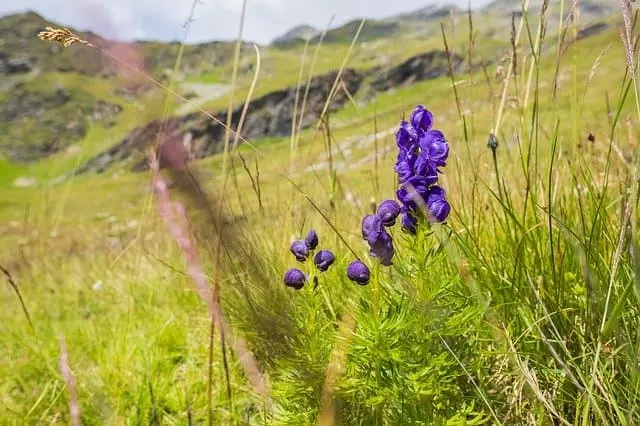
When to Plant Aconite?
Aconite is a cold and frost-resistant plant. It can be multiplied by seed, indoors, during the months of January, February, and March.
In the case of outdoor sowing, it should be done in January, August, September, or December.
It can also be grown through the roots of the plant during the months of September, October and November, in order to see them bloom during June, July, and August.
It can be planted by bulb during the spring, but the level of moisture in the soil should be monitored, especially during the first summer.
- Country/Region Of Manufacture:United States, Mpn:Herb/Flowers
- Brand:Aconitum Napellus, Type:Herb
- Model:Monkshood, Patternname: 50 Seeds
Where to Plant Aconite?
The aconite plant should be planted in a place where it can benefit from direct sunlight, or in a semi-shade. It needs a moist, deep, and nitrified substrate.
If you want to plant it in warm regions, you should look for an area with a semi-shade, where it is exposed to sunlight only for a few hours in the morning or in the evening.
How to Grow Aconite – Soil
The ideal soil for growing aconite is rich in nutrients, well-drained, weakly acidic, with a pH of 4.5 to 7.5. It is therefore important to prepare it with manure, guano, banana, or eggshells, among others, from the beginning of spring to the end of summer.
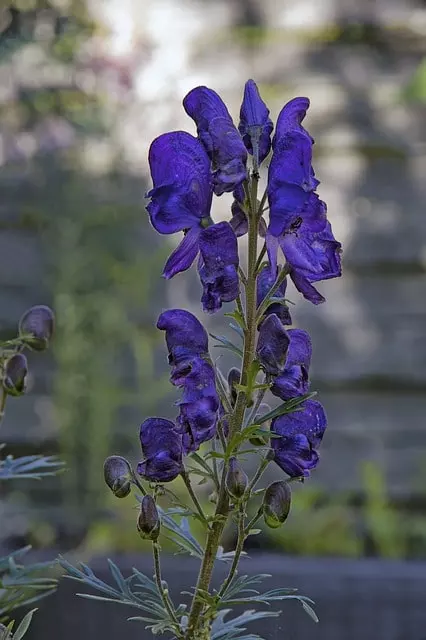
Watering Aconite
Aconite can be watered with rainwater or without lime. If you do not have a rainwater harvesting system, then you can use a water tank in which the water rests for 1 or 2 days. This procedure will remove chlorine and lime from the water.
How Often Do We Water Aconite?
It is recommended to water the aconite plant frequently but in a controlled manner to avoid saturation of the soil. In hot periods and summer, water should be watered every 2 days.
Watering can be reduced to every 5 to 6 days during the other months of the year.
How to Grow Aconite Step by Step
Aconite can be propagated through different methods: by seed, by root division, and by cuttings. Below are the steps to how to grow aconite by seed and by root division.
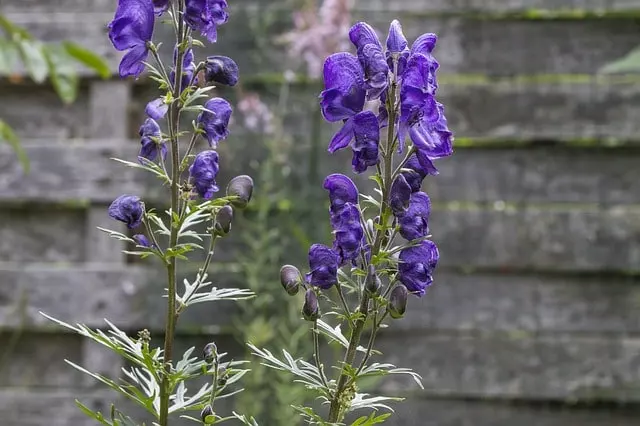
How to Grow Aconite by Seed
- Place seeds in a container or plastic bag with moist sand, preferably mature seeds due to their long dormancy and low germination rate.
- Place the container in a humid and warm environment, between 60 °F and 71.6 °F (16°C and 22°C), for a period of 2 to 4 weeks.
- Move the container to a cold place, preferably in the refrigerator, at temperatures between 24 °F and 41 °F (-4°C and 5°C), for a period of 5 to 6 weeks.
- After the recommended time, remove the container from the cold and keep it at room temperature, checking regularly to see if any seeds have germinated.
- Once the seedling has grown sufficiently, place it in a hole twice its size and enrich the area with organic fertilizer.
- Water abundantly without saturating the substrate.
How to Grow Aconite by Root Division
- Divide the extracted root of the aconite into 2″ (5-centimeter) sections along with part of its root system.
- Transplant the roots to the desired area, in holes slightly larger than the plant segment, 2″ (5 centimeters) deep, leaving a separation of 2″ to 4″ (5 to 10 centimeters) between them.
- Water the area to compact the substrate.
- This process can be done every 4 to 5 years during the fall, when flowering decreases.
How to Care Aconite Plant
Beware of this!
Having an aconite plant can become extremely dangerous, especially if at home there are children or pets. Its cultivation involves risks and you have to think seriously about them before planting it.
The use of gloves is recommended during the cultivation and handling of aconite to avoid absorbing the toxicity of the plant or its roots through the skin. We recommend these garden gloves (Order here).
Regarding maintenance, aconite does not require demanding work. However, fertilization work can be done during the spring, as well as the purification of withered flowers or buds to prolong the flowering period.
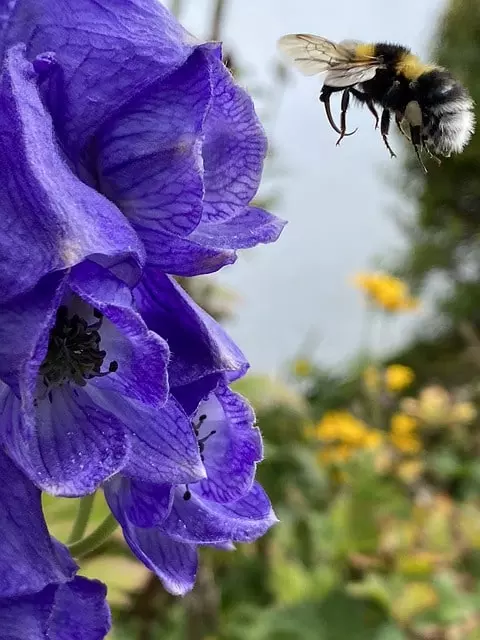
What Pests and Diseases Affect Aconite?
Aconite is rarely affected by verticillium (Verticillium) or powdery mildew (Leveillula taurica). Also, its roots may rot due to water stagnation.
We hope you find this article on how to grow aconite very useful. Aconite recently became known for the third season of the Netflix series You. We recommend our article about Planting Daffodil Bulbs.
